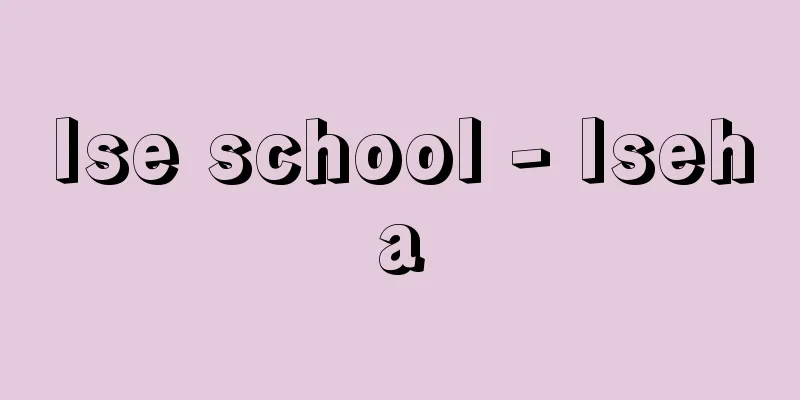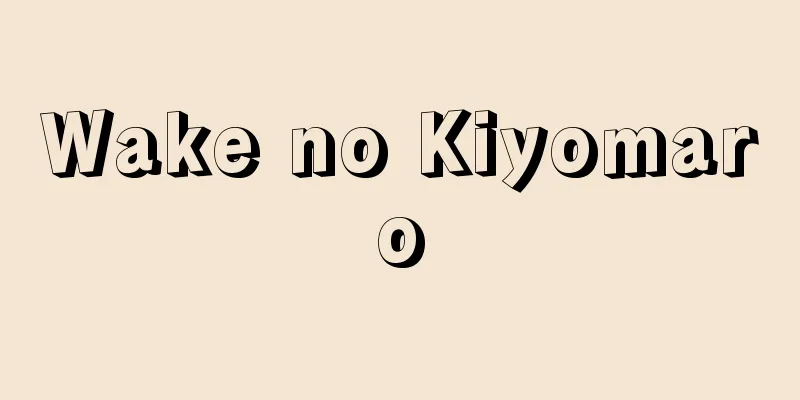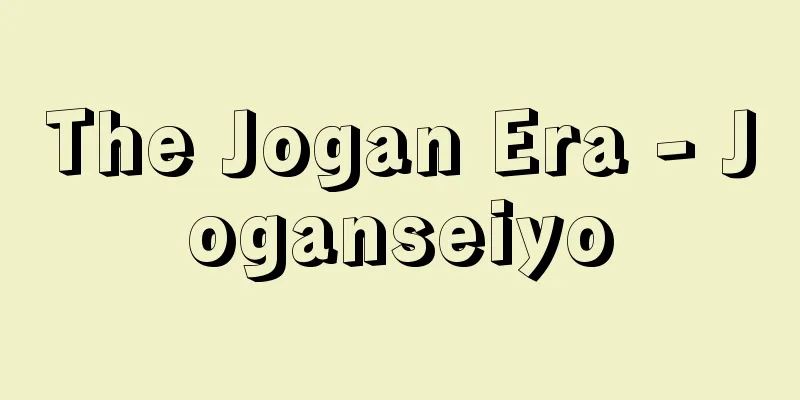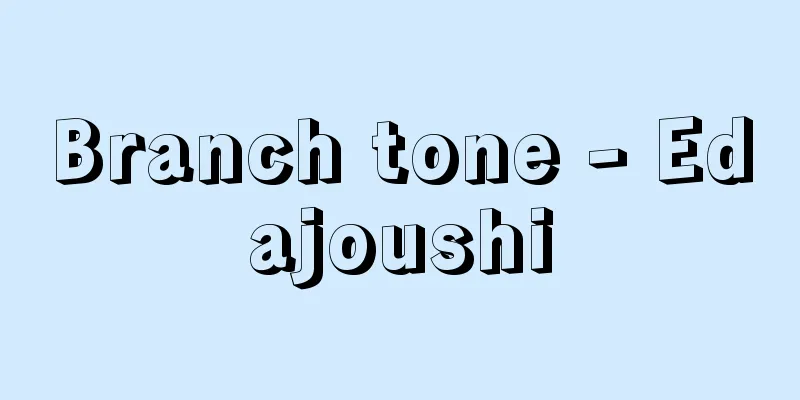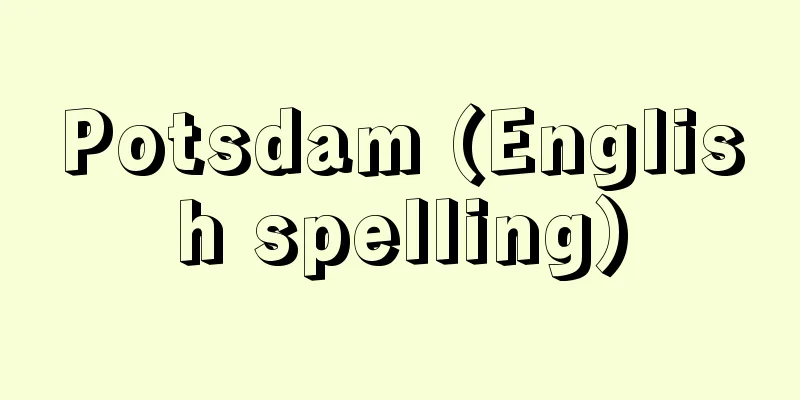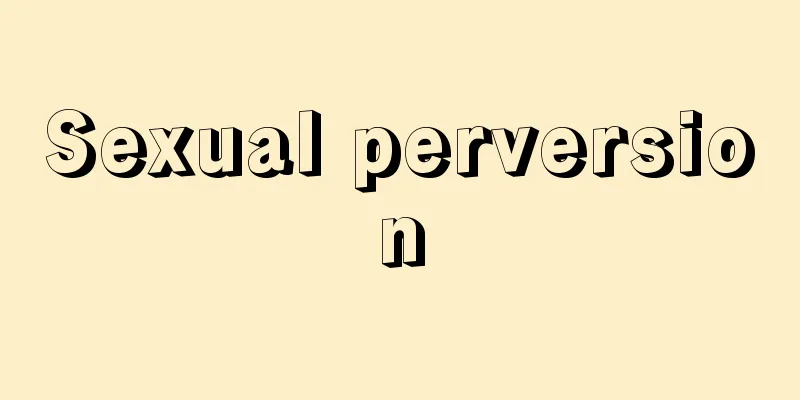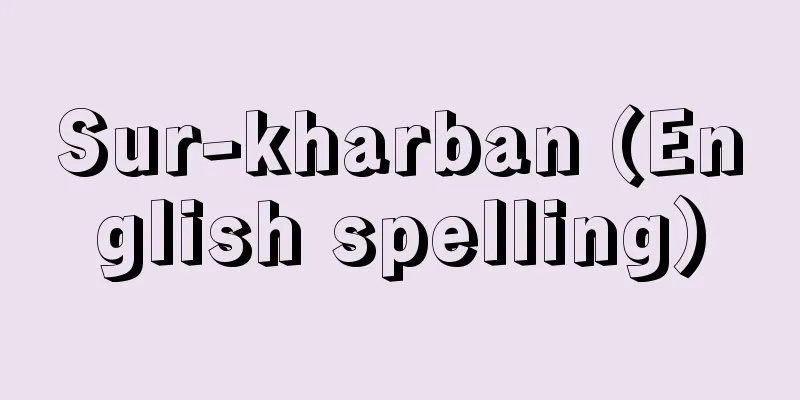Criminal Procedure

|
It refers to the reality of criminal procedures as carried out by the Criminal Procedure Law. When a crime occurs, an investigative agency conducts an investigation, and certain cases are sent to the prosecutor. The prosecutor decides whether to indict or not indict the case. When a case is indicted, the court reviews the case to determine whether the defendant is guilty or not guilty, and if found guilty, imposes a sentence. If the sentenced punishment is a prison sentence, the prosecutor will carry out the sentence. Traditionally, such criminal proceedings have been considered to be procedures for realizing the right to punish crimes as defined by the Criminal Code, and for that purpose, the discovery of the substantive truth, i.e., clarifying the truth of the case, has been considered the highest principle of criminal proceedings. Therefore, there are cases in which the Criminal Code is concretely realized by procuring a guilty verdict, determining a punishment, and serving a prison sentence, based on strict fact-finding, and this is the core of criminal proceedings. However, there are also cases in which criminal cases are handled in a different way. There are also a huge number of cases in which fact-finding is carried out without a public trial, and the punishment is sentenced in summary proceedings. There are also cases in which cases are handled without concretely realizing the Criminal Code, such as minor offense dispositions and deferred prosecution dispositions. Furthermore, there are cases in which the prosecution is dismissed due to defects in the prosecution process, or the procedure is terminated with a verdict of dismissal due to the expiration of the statute of limitations, for example. Of course, there are also cases in which a not guilty verdict is handed down. Therefore, criminal proceedings must be viewed as a legal system that regulates the overall method of handling these cases. The purpose of criminal proceedings should not be narrowly understood as merely implementing the criminal law, but must be broadened to mean resolving criminal cases fairly and promptly. To settle a criminal case fairly and promptly means to restore social or legal order fairly and promptly by a method appropriate to each criminal case, such as clarifying the truth of the case and realizing the right to punish, while following legal procedures and guaranteeing the human rights of individuals. In other words, to settle a criminal case, it is necessary to settle it in accordance with the Criminal Procedure Code (see Article 31 of the Constitution). In contrast, to settle a civil case, it is not necessary to follow the Civil Procedure Code. Civil cases, whether they are disputes over property or status, can sometimes be settled by the parties' discussions alone. In such cases, the so-called principle of private autonomy applies. Even if a civil case becomes a lawsuit, the parties can dispose of their civil rights (principle of the parties' right to dispose). Therefore, the truth in civil proceedings is said to be formal truth, unlike criminal proceedings. It is fundamentally different from criminal proceedings, where the principle of substantive truth applies. [Soriichi Taguchi April 18, 2018] investigationWhen an investigative agency believes that a crime has been committed, it will carry out investigative activities to preserve evidence of the crime and to keep the suspect in custody. Examples of triggers for an investigative agency to believe that a crime has been committed include routine questioning, vehicle inspections, and autopsies, while examples of triggers for a report from someone other than an investigative agency include victim reports, complaints, accusations, and surrenders. In the vast majority of cases, a crime is actually made known through reports from third parties such as the victim or witness of the crime. Investigations are divided into voluntary investigations and compulsory investigations. In addition to interrogations and appraisals that are prescribed by law, voluntary investigations include a variety of investigative methods such as questioning and tailing. Compulsory investigations can be divided into those related to the preservation of the suspect's custody and those related to the preservation of evidence. There are arrests and detentions to preserve the physical custody of suspects. There are ordinary arrests, arrests in flagrante delicto, and emergency arrests. As a procedure after arrest by judicial police officers, the suspect is notified of the gist of the crime, informed that he or she can select a lawyer, given an opportunity to defend, and if there is no need for detention, the suspect is released immediately, and if detention is considered necessary, the suspect must be sent to the public prosecutor together with documents and evidence within 48 hours of being detained. The public prosecutor who receives the suspect must give him or her an opportunity to defend, release him or her immediately if there is no need for detention, and if detention is considered necessary, request the judge to detain the suspect within 24 hours of receiving the suspect. This time limit cannot exceed 72 hours from the time the suspect is detained. Detention is the detention of the suspect following arrest. The detention period is 10 days, and can be extended for another 10 days (for special crimes such as treason, it can be extended for another 5 days). The place of detention is a penal institution, which includes police detention cells. It is a so-called substitute penal institution (formerly called substitute prison). As for the activities to preserve evidence, voluntary measures include on-site inspections, and compulsory measures include searches, seizures, inspections, and appraisals. In 1999, the Criminal Procedure Code was revised to make wiretapping without the consent of either party a compulsory measure, and in the same year, the Wiretapping Act (officially known as the "Act on Wiretapping for Criminal Investigation") was enacted, allowing wiretapping to be carried out for certain types of crimes based on a judge's warrant. Testimony evidence is collected by questioning suspects, and by so-called witness questioning for non-suspects. If a suspect confesses during questioning while in custody, disputes often arise in court over the voluntariness of the confession. For this reason, the 2016 amendment to the Code of Criminal Procedure introduced a system for audio and video recording of interrogations, which stipulates that in order for prosecutors to prove the voluntariness of a confession, they must request access to recording media that has audio and videotaped the interrogation of certain crimes. Police investigations may be terminated with a minor offense disposition for minor cases. A minor offense disposition is a system whereby judicial police officers, at the direction of a prosecutor, are not required to refer certain minor offenses to the prosecutor, and instead only need to report these cases to the prosecutor once a month. For other cases, judicial police officers are required to promptly refer the case to the prosecutor along with documents and evidence when they have investigated a crime. This is known as a referral to the prosecutor (sent to the prosecutor), and the police investigation is terminated. For cases that have been referred to the prosecutor, supplementary investigations will be conducted from the prosecutor's perspective, i.e., from the perspective of maintaining a fair trial. However, in cases where a police detention facility is used as the place of detention for cases involving physical custody, the police investigation often continues under the direction of the prosecutor. [Soriichi Taguchi April 18, 2018] prosecutionOnce the investigation is concluded, the public prosecutor decides whether or not to institute prosecution for the case. Prosecution can be initiated by requesting a public trial or by requesting a summary trial. Summary trials can involve requests for summary orders and petitions for summary trial procedures. A request for summary orders is a procedure in which the summary court requests the summary court to impose a fine or a penalty without holding a public trial in cases that fall under its jurisdiction, while summary trial procedures are a procedure in which a petition is filed for a summary and speedy trial procedure in which a same-day sentence, with suspended execution as a rule, is handed down in uncontested minor cases. Regarding public prosecution, the principle has been that only the public prosecutor, a national organ, can bring a public prosecution, and that the public prosecutor has the monopoly on prosecution. In addition, the principle of expediency in prosecution has been adopted, which means that the public prosecutor may not bring a public prosecution even if a crime is established, if prosecution is not necessary for the public interest. This is the so-called deferred prosecution. In some cases, the exercise of the right to prosecute may be arbitrary or self-righteous on the part of the public prosecutor. To prevent this, there is a system of quasi-indictment procedures (referral procedures) in court for crimes of abuse of authority, and a prosecutorial review committee system for all crimes. The prosecutorial review committee reviews the propriety of the prosecutor's decision not to bring a public prosecution. With the amendment of the Prosecutor's Review Committee Act in 2004, if the public prosecutor again decides not to prosecute despite the Prosecutor's Review Committee's decision to prosecute, and if the Prosecutor's Review Committee again reviews the case and again decides to prosecute (indictment resolution), the indictment resolution will be recognized as having the effect of bringing a public prosecution. In addition, the 2016 amendment to the Code of Criminal Procedure introduced the agreement system and the criminal immunity system based on the prosecutor's discretionary power to prosecute. The agreement system allows the prosecutor to enter into an agreement to grant certain benefits to the suspect or defendant if the suspect or defendant promises to cooperate with the investigation and trial of the criminal case of another person, subject to the consent of the defense lawyer. The criminal immunity system is a system that grants criminal immunity to some defendants who are in a relationship of accomplice, etc., thereby eliminating their privilege against self-incrimination and forcing them to testify, and their testimony can be used as evidence to prove the guilt of others. Both systems were introduced to reform criminal procedures that have been overly dependent on the interrogation of suspects. [Soriichi Taguchi April 18, 2018] Pretrial ArrangementsOnce charges are filed, preparations are made for the trial. Depending on the case, pretrial preparation procedures are conducted to ensure that thorough trial proceedings are conducted continuously, systematically, and promptly. Pretrial preparation procedures are procedures to formulate a thorough trial plan by having the parties clarify the facts they plan to assert in the trial, request the examination of evidence, and thoroughly disclose evidence before the first trial date, and they significantly strengthen the level of trial preparation compared to normal preparatory procedures. In particular, in trial procedures involving lay judges, it is necessary to clarify the planned trial period before the lay judge selection procedure, and it is necessary to prepare for the trial so that the court can hold sessions every day as much as possible. For these reasons, the system of pretrial preparation procedures was introduced with the revision of the Code of Criminal Procedure in 2004, and the implementation of pretrial preparation procedures has become a mandatory condition, especially in lay judge trials. Pretrial preparation procedures are conducted by the court in charge of the trial of the case, and the prosecutor and defense attorney are present. They cannot be conducted without the defendant's defense attorney, and if the defendant does not have a defense attorney, the presiding judge must appoint one by his/her own authority. The defendant may appear at the pretrial preparation procedures, and the court may request the defendant to appear. In pretrial preparation procedures, issues and evidence are organized. When a case is referred to pretrial preparation procedures, the prosecutor must submit a document stating the facts to be proven and request the examination of evidence. The evidence requested for examination must be disclosed promptly to the defendant or defense attorney (disclosure of requested evidence). The 2016 amendment to the Code of Criminal Procedure also introduced a system for issuing a list of evidence held by the prosecutor upon request from the defendant or defense attorney. In addition, evidence other than the requested evidence that falls under a certain type of evidence must also be disclosed upon request from the defense attorney (disclosure of type-type evidence). This has significantly expanded the evidence disclosure system, including disclosure of depositions of witnesses requested by the prosecutor for examination, which has often led to disputes over disclosure of evidence. On the other hand, when the defendant or his/her defense attorney receives the facts that the prosecutor intends to prove and the disclosure of the requested evidence or the disclosure of the typical evidence, he/she must clearly indicate the facts that the defendant intends to prove, and if a point of issue is established as a result of this, he/she must request the examination of evidence that will prove that point. Furthermore, the evidence requested for examination must be disclosed to the prosecutor. Furthermore, when the defendant's side clearly indicates the points of issue, upon request from the defendant's side, the prosecutor will promptly disclose evidence other than the requested evidence and the typical evidence that is deemed to be related to the points of issue, taking into consideration the degree of relevance, the degree of necessity for the defendant's defense, and the content of the harmful effects of disclosure, if he/she deems it appropriate (disclosure of evidence related to the points of issue). If an adjustment is required to the above-mentioned evidence disclosure procedures, the court may make a ruling, issue a ruling regarding the timing, method or conditions of evidence disclosure, order the disclosure of evidence, and even order the production of a list listing the titles of the evidence. In pretrial preparation procedures, when the defense counsel sets the issues, the defense counsel is required to make an opening statement in the trial proceedings. In cases that have been referred to pretrial preparation procedures, the court must clarify the results of the pretrial preparation procedures. In cases that have been referred to pretrial preparation procedures, the prosecutor and the defendant or defense counsel cannot request the examination of evidence after the pretrial preparation procedures are completed, except in cases where they were unable to request the examination of evidence during the pretrial preparation procedures due to unavoidable circumstances. [Soriichi Taguchi April 18, 2018] Regular First Instance Trial ProceduresThere are two types of trial procedures: those in which pretrial preparation procedures have been carried out and those in which they have not been carried out. There are also cases in which the court is composed only of judges and those in which lay judges are also involved. The basic structure is the same in these cases, but in particular in cases in which lay judges are involved, it is necessary to take care to make the trial proceedings easy to understand for lay judges who are not familiar with law. The trial procedure consists of four stages: opening proceedings, evidentiary proceedings, oral argument, and judgment. [1] Opening procedures consist of four steps: (1) questioning, (2) the prosecutor reading the indictment, (3) informing the defendant of his or her rights, and (4) giving the defendant and his or her defense counsel an opportunity to make a statement. Questioning is a procedure to ensure that the defendant is not a case of mistaken identity. After questioning is completed, the prosecutor reads the indictment. After this is completed, the presiding judge informs the defendant of his or her right to remain silent and other necessary matters to protect the defendant's rights. After the notice of rights has been given, the defendant and his or her defense counsel may make statements regarding the case against them. [2] At the beginning of the evidentiary examination procedure, (1) the prosecutor must clarify the facts to be proved by the evidence. This is called the opening statement. In some cases, the defendant and the defense lawyer make opening statements. (2) Next, the prosecutor requests the examination of evidence. When requesting the examination of evidence, the relationship between the evidence and the facts to be proved must be specifically specified. This is the so-called clarification of the purpose of proof. (3) When a request for the examination of evidence is made, the court decides whether to accept it and determines the scope, order, and method of the examination of evidence. (4) Then, depending on the type of evidence, the examination of evidence is carried out, such as examination of witnesses, examination of evidentiary documents, examination of evidentiary objects, and questioning of the defendant. If necessary, the examination of evidence may be carried out on the court's own initiative. (5) In response to the examination of evidence, the parties are given an opportunity to contest the probative value of the evidence. The evaluation of evidence is left to the free judgment of the judge (free judgment principle), but under the current Criminal Procedure Law, which has a basic structure based on the party principle, the parties are also required to participate in the evaluation of evidence. In addition, the parties may file objections to the examination of evidence. [3] In oral argument, (1) the prosecutor first states his/her opinion. This is called closing argument. In closing argument, the prosecutor usually also states his/her opinion on the specific sentence. This is called sentencing. (2) Next, the defendant and the defense lawyer state their opinions. This is known as the closing argument. Usually, the defense lawyer gives the closing statement first, followed by the defendant. When the oral argument procedure is over, the trial is concluded. [4] Regarding the status of crime victims in trial proceedings, (1) the 2000 amendment to the Code of Criminal Procedure and the Law on Measures Accompanying Criminal Proceedings to Protect the Rights and Interests of Crime Victims, etc. (Law No. 75 of 2000) introduced a system of video link witness examination and shielding measures during witness examination, a system allowing victims to express their feelings and opinions, and a system of granting enforceability to trial records that describe civil settlements regarding damages, and (2) the 2007 amendment to the Code of Criminal Procedure created a victim participation system in which crime victims can participate in criminal trials, allowing victims to question witnesses on mitigating matters, question the defendant, or express their opinions in oral arguments as victim participants. In addition, a system of non-disclosure of victim identification information such as the victim's address and name, and a system of damage compensation orders were also established. Furthermore, (3) whereas previously it was only possible to request that victim-identifying information not be disclosed to the defendant when disclosing evidence, the 2016 amendment to the Code of Criminal Procedure introduced a system of evidence disclosure that provides for disclosure of evidence on the condition that victim-identifying information not be disclosed to the defendant when there is a risk of harm to the victim's body or property, or which takes alternative measures, such as providing the defendant with a name instead of his or her name or contact information instead of his or her address. [5] Judgments are announced in open court. In addition to verdicts of guilty or not guilty, open trials include verdicts of incompetence, verdicts of dismissal of charges, and verdicts of acquittal. In the case of a guilty verdict, the defendant is notified of the period for appeal, etc. After the verdict is announced, the presiding judge may give the defendant an appropriate admonition. In a trial involving lay judges, special consideration is required compared to a trial involving a judge. (1) Judges, prosecutors, and defense lawyers must endeavor to make the trial quick and easy to understand so that lay judges can fully fulfill their responsibilities while not placing an excessive burden on them (Law on Criminal Trials with Lay Judges, Article 51). (2) In the opening statement, the relationship with the evidence must be specifically indicated based on the results of the pre-trial preparation of the issues and the evidence (Law on Criminal Trials with Lay Judges, Article 55). (3) In the examination of evidence, lay judges may, after informing the presiding judge, ask questions about matters necessary for the examination of witnesses and other persons (Law on Criminal Trials with Lay Judges, Article 56). (4) A system was established in 2007 to record witness examinations on a recording medium (Law on Criminal Trials with Lay Judges, Article 65), allowing lay judges to recall the testimony more clearly by playing back the recording. In addition, in cases where the trial record cannot be prepared in time for deliberations because the court is to be held every day as much as possible, the contents of the testimony can be confirmed by playing back the recording. (5) In deliberations, the presiding judge must carefully explain matters to the lay judges, organize the deliberations so that they are easy to understand, and provide ample opportunities for lay judges to speak (Article 66, Paragraph 5 of the same law). (6) The normal majority rule is amended to make the verdict by a special majority system, which requires that the verdict be made by the majority of the panel, including both judges and lay judges (Article 67, Paragraph 1 of the same law), and the defendant cannot be found guilty by a majority vote of lay judges alone. (7) The 2007 law amendment established a partial sentence system (Articles 71 and following of the same law). In other words, when multiple cases are indicted and their arguments are consolidated, in order to reduce the burden on lay judges, some of the cases are divided, lay judges are selected for each of the divided cases, and partial sentences are made on the facts. Based on this, the panel, which includes the newly selected lay judges, will make a final sentence, including a sentence, for the entire consolidated case. [Soriichi Taguchi April 18, 2018] appealThere are several ways to appeal against a trial, including appeal to the next court, appeal against the next court, extraordinary appeal, request for retrial, and request for a formal trial. Among these, appeal refers to appeal to the next court, appeal against the next court, and appeal against the next court. An appeal is an appeal to a high court. Grounds for appeal are statutory violations of the procedural law, misapplication of the law, inappropriate sentencing, and misidentification of facts (Criminal Procedure Code, Articles 377-382). An appeal is an appeal to the Supreme Court. Grounds for appeal are violations of the Constitution and precedents (Criminal Procedure Code, Article 405), but even if there are no grounds for appeal, the appellate court may overturn the original judgment by its own authority if it finds that there is a gross injustice in the sentence or a serious misidentification of facts and that it would be extremely unjust if the original judgment were not overturned (Criminal Procedure Code, Article 411). An appeal is an appeal against a decision or order of a court. [Soriichi Taguchi April 18, 2018] The judgment is finalizedOnce a judgment is finalized, it becomes enforceable and the sentence can be executed (Article 471 of the same law). In addition, when a judgment of guilt, innocence, or acquittal is finalized, res judicata (the effect of double jeopardy) is generated (Article 337, item 1 of the same law). A judgment is finalized in the following cases. (1) The judgment of the appellate court becomes final when the period for filing a petition for correction of the judgment has elapsed 10 days from the date of the sentence, or, if a petition for correction of the judgment is filed by the prosecutor, defendant, or defense attorney within that period, when a judgment for correction or a decision to dismiss the petition is made. (2) The judgments of the first and second instances become final when the period for filing an appeal, which is 14 days from the date of notice of the judgment, has elapsed. (3) They are also finalized by abandonment or withdrawal of the appeal. However, the right to appeal cannot be abandoned in the case of an appeal against a sentence of death penalty or life imprisonment or incarceration. (4) When a judgment of dismissal of an appeal is finalized, the original judgment also becomes final. In addition, the 2016 amendment to the Code of Criminal Procedure made it possible to file a re-indictment for the same case as an exception to Article 340 of the Code of Criminal Procedure, when a prosecutor's decision to dismiss the charges due to withdrawal of the charges has become final, in order to simplify and speed up the processing of cases in which a confession has been made (Article 350-26 of the same code). [Kinsaku Saito, Ichiro Uchida, and Morikazu Taguchi, April 18, 2018] Emergency relief proceduresThere are two methods of appealing a final judgment: retrial and extraordinary appeal. A request for retrial is a request for a remedial trial against a final judgment on the grounds that the findings of fact were inappropriate, and may only be made in the interest of the defendant. In cases where a decision to open a retrial has become final, the court must, in principle, hold a further trial in accordance with its level of jurisdiction. An extraordinary appeal is a request to overturn a final judgment or its legal proceedings on the grounds that there has been a violation of law, and its purpose is to unify the interpretation of law. Therefore, in principle, the effect of a judgment on an extraordinary appeal does not extend to the defendant. [Kinsaku Saito, Ichiro Uchida, and Morikazu Taguchi, April 18, 2018] ExecutionIn principle, a trial is executed after it has become final. As an exception, there are cases where the provisional payment of fines and other penalties can be executed before the trial is final. Even after the trial is final, there are cases where a special order is required, such as the death penalty, and in cases where the person sentenced to a prison sentence is in a state of insanity, the execution of the sentence may be temporarily suspended at the command of the public prosecutor. In principle, the execution of a trial is commanded by a public prosecutor at the public prosecutor's office corresponding to the court that conducted the trial. The death penalty is executed by order of the Minister of Justice. The execution is carried out by hanging in a penal institution with the attendance of certain persons. The Juvenile Law aims to ease the burden of the death penalty. The execution of a prison sentence is carried out in a penal institution. The details of the execution method are stipulated in laws such as the Penal Detention Facility and the Treatment of Detainees. In addition to property penalties, i.e. fines, penalties, and confiscation, penalties, fines, confiscation, legal costs, compensation for costs, and provisional payment, trials are executed by order of the public prosecutor. [Kinsaku Saito, Ichiro Uchida, and Morikazu Taguchi, April 18, 2018] [Reference items] | | | | | | | | | |public | | | | | | | | | | | | | | | | | | | |Source: Shogakukan Encyclopedia Nipponica About Encyclopedia Nipponica Information | Legend |
|
刑事訴訟法によって展開される刑事手続の現実それ自体をいう。犯罪が発生すると捜査機関が捜査を行い、一定の事件は検察官に送られる。検察官は、事件を起訴するか不起訴とするかの決定を行う。事件が起訴されると、裁判所は、事件について有罪か無罪かを審理し、有罪である場合には刑罰を言い渡す。検察官は、言い渡された刑罰が実刑である場合には、その刑罰を執行することになる。 このような刑事訴訟手続は、伝統的には、刑法で定められた犯罪に対する刑罰権を実現するための手続であるとされ、そのためには事件の真相を解明するという実体的真実の発見が刑事訴訟の最高の原理とされてきた。それゆえ、厳密な事実認定に基づいて有罪が言い渡され、刑罰が量定され、実刑となって刑罰が執行されることで刑法が具体的に実現される場合もあり、それが刑事訴訟の中核である。しかし、刑事事件がそれとは異なる方法で処理される場合もある。公判を開かないで事実認定を行い、罰金を言い渡す略式手続で処理される事件も膨大である。また、微罪処分や起訴猶予処分のように刑法の具体的実現のない事件処理がなされる場合もある。さらに、訴訟手続の瑕疵(かし)からの公訴棄却の裁判、あるいは、たとえば公訴時効の完成により免訴判決で手続が打ち切られる場合もある。むろん、無罪判決が言い渡される場合もある。したがって、刑事訴訟は、これらの事件処理方法の全体を規律する法制度とみなければならない。刑事訴訟の目的は、刑法を実現することというように狭くとらえるべきではなく、より広く、刑事事件を適正かつ迅速に解決することにあるといわなければならない。 刑事事件を適正かつ迅速に解決するとは、法律の手続に従って、個人の人権を保障しつつ事件の真相を明らかにして刑罰権を実現するなど個々の刑事事件にふさわしい処理方法により、適正かつ迅速に社会的あるいは法的秩序を回復することをいう。すなわち、刑事事件を解決するには、かならず刑事訴訟法に従って解決することが求められる(憲法31条参照)。これに対して、民事事件を解決するには、かならずしも民事訴訟法という法律に従う必要はない。民事事件は、財産に関する紛争であれ身分に関する紛争であれ、当事者の話し合いだけで解決することもある。そこでは、いわゆる私的自治の原則が妥当する。民事事件が訴訟となった場合でも、民事上の権利は当事者が処分することができる(当事者処分権主義)。したがって、民事訴訟上の真実は、刑事訴訟とは異なり、形式的真実といわれる。実体的真実主義が妥当する刑事訴訟とは、根本において異なっている。 [田口守一 2018年4月18日] 捜査捜査機関は、犯罪があると考えた場合に、犯罪の証拠を保全し、被疑者の身柄を保全する捜査活動を行う。捜査機関が犯罪があると考える端緒として、職務質問、自動車検問あるいは検視等があり、捜査機関以外の者が届け出る端緒として、被害届、告訴、告発あるいは自首等がある。実際に犯罪が認知されるのは、犯罪の被害者や目撃者等の第三者の届出による場合が圧倒的に多い。捜査は、任意捜査と強制捜査に区別される。任意捜査には、取調べや鑑定など法律規定のあるもののほか、聞込みや尾行など多様な捜査方法がある。強制捜査としては、被疑者の身柄保全に関するものと証拠保全に関するものがある。 被疑者の身柄保全として逮捕と勾留(こうりゅう)がある。逮捕には、通常逮捕、現行犯逮捕および緊急逮捕がある。司法警察職員による逮捕後の手続として、被疑者に、犯罪事実の要旨を告知し、弁護人を選任できることを告知し、弁解の機会を与え、留置の必要がないときは、ただちに釈放し、留置の必要があると考えるときは、被疑者が身体を拘束されたときから48時間以内に書類および証拠物とともにこれを検察官に送致しなければならない。引致を受けた検察官は、弁解の機会を付与し、留置の必要がないときはただちに釈放し、留置の必要があると考えるときは、被疑者を受け取ったときから24時間以内に、裁判官に被疑者の勾留を請求しなければならない。この時間の制限は、被疑者が身体を拘束されたときから72時間を超えることはできない。勾留は、逮捕に引き続く身柄拘束である。勾留期間は、10日であり、さらに10日間延長することができる(内乱罪など特別な罪については、さらに5日間延長することができる)。勾留の場所は刑事施設であるが、これには警察留置場も含まれる。いわゆる代用刑事施設である(かつては代用監獄とよばれた)。証拠の保全活動として、任意処分としては実況見分などがあり、強制処分としては、捜索、差押え、検証、鑑定などがある。1999年(平成11)の刑事訴訟法改正により、通信の当事者のいずれの同意も得ない通信傍受が強制処分とされ、これを受けて同年に通信傍受法(正式名称は「犯罪捜査のための通信傍受に関する法律」)が制定され、特定の犯罪類型に関して、裁判官の傍受令状に基づく通信傍受が実施されることになった。供述証拠の収集は、被疑者については被疑者の取調べにより、被疑者以外の者についてはいわゆる参考人取調べがなされる。身柄を拘束された被疑者の取調べにより被疑者が自白した場合、その自白の任意性をめぐって公判で争いが生ずることも多い。このようなことから2016年(平成28)の刑事訴訟法改正により取調べの録音・録画制度が導入され、検察官が自白の任意性を証明するためには、一定の犯罪について取調べの状況を録音・録画した記録媒体の取調べを請求しなければならないこととされた。 警察の捜査は、軽微な事件についてはいわゆる微罪処分によって終結する場合がある。微罪処分とは、司法警察員が検察官の指示により、一定の微罪について検察官に送致することなく、これらの事件を毎月1回一括して検察官に報告すれば足りるとする制度である。それ以外の事件については、司法警察員は、犯罪の捜査をしたときは、速やかに書類および証拠物とともに事件を検察官に送致しなければならないとされている。いわゆる検察官送致(送検)であり、これによって警察捜査は終結する。送致事件については、検察官の立場すなわち公判維持の観点から、補充捜査がなされることになる。ただし、身柄事件について警察留置場が勾留の場所とされる場合には、検察官の指揮の下で警察の捜査が続けられることが多い。 [田口守一 2018年4月18日] 公訴捜査が終結すると、検察官は、事件につき公訴を提起するかしないかの決定をする。公訴の提起には、公判を請求する場合と簡易裁判を請求する場合とがある。簡易裁判には、略式命令の請求と即決裁判手続の申立てがある。略式命令の請求は、簡易裁判所の管轄に属する事件について、公判を開かないで、簡易裁判所が罰金または科料を科することを請求する手続であり、即決裁判手続は、争いのない軽微な事件について簡易迅速な審判手続により原則として執行猶予のついた即日判決が言い渡されることを申立てる手続である。 公訴に関しては、国家機関である検察官だけが公訴を提起することができるとする検察官の起訴独占主義が原則とされてきた。また、検察官は、犯罪が成立する場合であっても、公益上、訴追を必要としないときは公訴を提起しないことができるとする起訴便宜主義がとられている。いわゆる起訴猶予である。そこで、場合によっては、公訴権の行使が検察官の恣意(しい)ないし独善に流れる可能性もある。これを抑制する制度として、職権乱用罪に関して裁判上の準起訴手続(付審判手続)の制度があり、またすべての犯罪に関して検察審査会制度がある。検察審査会は、検察官の公訴を提起しない処分の当否の審査を行う。2004年(平成16)の検察審査会法の改正により、検察審査会の起訴相当の議決にもかかわらず、検察官が再度不起訴処分とした場合には、検察審査会が再度の審査を行い、再度の起訴相当の議決(起訴議決)を行った場合には、この起訴議決に公訴提起の効果が認められることとなった。 なお、2016年の刑事訴訟法改正により、検察官の訴追裁量権に基づき、合意制度と刑事免責制度が導入された。合意制度は、弁護人の同意を条件に、被疑者または被告人が他人の刑事事件の捜査および公判に協力することを約束すれば、検察官は、被疑者または被告人に一定の恩典を与えることを内容とする合意をすることができるとするものである。刑事免責制度は、共犯等の関係にある者のうちの一部の被告人に刑事免責を付与することによってその者の自己負罪拒否特権を消滅させて証言を強制し、その供述を他の者の有罪を立証する証拠とすることができるとする制度である。いずれも、被疑者の取調べに過度に依存してきた刑事手続を改革するために導入された制度である。 [田口守一 2018年4月18日] 公判前整理手続公訴の提起がなされると、公判に備えた準備がなされる。事件によっては、充実した公判の審理を継続的、計画的かつ迅速に行うために公判前整理手続が行われる。公判前整理手続とは、第1回公判期日前に、公判において当事者が主張する予定の事実を明示させ、証拠調べの請求をさせ、また、証拠開示を徹底して行わせる等により、十分な審理計画を策定するための手続をいい、通常の準備手続に比べて公判準備の程度を格段に強化している。ことに、裁判員の参加する公判手続においては、裁判員の選任手続以前に、公判の予定期間を明らかにしておく必要があるとともに、できる限り連日開廷を行えるような公判準備をしておく必要がある。このようなことから、公判前整理手続の制度が、2004年の刑事訴訟法改正により導入され、とくに裁判員裁判では公判前整理手続を行うことが必須の条件となった。 公判前整理手続は、当該事件の審判を担当する受訴裁判所が主宰して行い、検察官および弁護人が出席する。被告人の弁護人がいなければ行うことはできず、被告人に弁護人がいないときは、裁判長は、職権で弁護人を付さなければならない。被告人は、公判前整理手続に出頭することができるし、また、裁判所は、被告人の出頭を求めることができる。公判前整理手続では、争点の整理と証拠の整理がなされる。検察官は、事件が公判前整理手続に付されたときは、証明予定事実を記載した書面を提出し、証拠の取調べを請求しなければならない。そして、取調べを請求した証拠については、速やかに、被告人または弁護人に証拠開示をしなければならない(請求証拠の開示)。2016年の刑事訴訟法改正では、被告人または弁護人から請求のある場合には検察官の保管する証拠の一覧表の交付制度も導入された。また、請求証拠以外の証拠であって、一定の証拠の類型に該当するものについても、弁護人から請求があれば証拠開示しなければならない(類型証拠の開示)。これには、これまで証拠開示をめぐって争いがある場合が多かった、検察官が証人として尋問を請求した者の供述録取書等も開示対象となり、証拠開示制度が大きく拡充された。他方、被告人または弁護人は、検察官の証明予定事実の提示および請求証拠の開示ないし類型証拠の開示を受けたときは、被告人側の証明予定事実等を明示しなければならず、これによって争点を設定したときは、それを証明する証拠の取調べを請求しなければならない。また、取調べ請求証拠は、検察官に証拠開示しなければならない。さらに、被告人側が争点を明示した場合に、被告人側から請求があったときは、検察官は、請求証拠の開示および類型証拠の開示以外の証拠であって、争点に関連すると認められるものについて、その関連性の程度、被告人の防御にとっての必要性の程度、開示に伴う弊害の内容程度を考慮し、相当と認めるときは、速やかに証拠開示をすることとなった(争点関連証拠の開示)。以上の証拠開示手続について調整が必要となった場合には、裁判所が裁定を行うことができ、証拠開示の時期、方法あるいは開示の条件に関する裁定、証拠開示命令さらには証拠の標目を記載した一覧表の提示命令も出せることとなった。 公判前整理手続において、弁護人が争点を設定したときは、公判手続における弁護人による冒頭陳述が必要となる。公判前整理手続に付された事件については、裁判所は、公判前整理手続の結果を明らかにしなければならない。公判前整理手続に付された事件については、検察官および被告人または弁護人は、公判前整理手続においてやむをえない事由によって証拠調べを請求することができなかったものを除き、公判前整理手続が終わった後には、証拠調べを請求することはできない。 [田口守一 2018年4月18日] 通常第一審の公判手続公判手続には、公判前整理手続がなされた公判手続とそれがなされなかった公判手続とがある。また、裁判体が裁判官のみによって構成される場合と裁判員の参加する場合がある。これらは基本的な仕組みに変わりはないが、とりわけ裁判員の参加する公判手続では、法律の素人(しろうと)である裁判員にわかりやすい公判審理とする配慮が必要となる。 公判手続は、冒頭手続、証拠調べ手続、弁論および判決の4段階からなる。 〔1〕冒頭手続は、(1)人定質問、(2)検察官の起訴状朗読、(3)被告人への権利の告知および(4)被告人・弁護人への陳述の機会付与の四つの手続からなる。人定質問は、被告人が人違いではないことを確認する手続である。人定質問が終了すると、検察官が起訴状を朗読する。これが終わると、裁判長が、被告人に対し、黙秘権その他の被告人の権利を保護するための必要な事項を告げる。権利告知がなされると、被告事件に対する被告人および弁護人の陳述がなされる。 〔2〕証拠調べ手続の初めに、(1)検察官は証拠によって証明すべき事実を明らかにしなければならない。これを冒頭陳述という。場合により、被告人および弁護人の冒頭陳述がなされる。(2)次に、検察官による証拠調べの請求がなされる。証拠調べの請求にあたっては、証拠と証明すべき事実との関係を具体的に明示しなければならない。いわゆる立証趣旨の明示である。(3)証拠調べの請求があると、裁判所は、その採否を決定し、証拠調べの範囲、順序、方法を決定する。(4)そして、証拠の種類により、証人尋問、証拠書類の取調べ、証拠物の取調べ、被告人質問といった証拠調べが実施される。必要があれば、職権による証拠調べもなされる。(5)証拠調べに対し、当事者には証拠の証明力を争う機会が与えられる。証拠の評価は裁判官の自由な判断にゆだねられているが(自由心証主義)、当事者主義を基本構造とする現行刑事訴訟法では、証拠評価に当事者も関与することとされたのである。また、証拠調べに関し、当事者は異議申立てをすることができる。 〔3〕弁論は、(1)まず検察官が意見を陳述する。これを論告という。論告に際して、検察官は、通常、具体的な刑の量定についても意見を述べる。これを求刑という。(2)ついで、被告人および弁護人が意見を述べる。いわゆる最終弁論である。通常は、先に弁護人が、ついで被告人が最終陳述をなす。弁論手続が終わると結審ということになる。 〔4〕公判手続における犯罪被害者の地位につき、(1)2000年の刑事訴訟法改正および「犯罪被害者等の権利利益の保護を図るための刑事手続に付随する措置に関する法律」(平成12年法律第75号)により、被害者証人の尋問につきビデオリンク方式による証人尋問制度および証人尋問の際の遮蔽(しゃへい)措置制度、被害者の心情等の意見陳述を可能とする制度および損害回復について民事上の和解を記載した公判調書に対する執行力の付与制度が導入され、(2)2007年の刑事訴訟法改正により、犯罪被害者が刑事裁判に参加する被害者参加制度が創設され、これにより、被害者は被害者参加人として、情状事項につき証人尋問をしたり、被告人質問をしたり、あるいは弁論として意見陳述ができることとなった。また、被害者の住所・氏名等の被害者特定事項を不開示とする制度等および損害賠償命令制度も創設された。さらに、(3)従来証拠開示にあたって被害者特定事項を被告人に知らせないことを要請できるにすぎなかったところ、2016年の刑事訴訟法改正により、被害者の身体・財産に対する加害のおそれがある場合には、被害者特定事項を被告人に知らせないことを条件とする証拠開示あるいは氏名にかわる呼称や住居にかわる連絡先を知らせるという代替的措置をとった証拠開示の制度も導入された。 〔5〕判決の宣告は、公開の法廷で行われる。公判の裁判には、有罪・無罪の判決のほか、管轄違いの判決、公訴棄却の裁判、免訴の判決がある。有罪判決の宣告の場合は、被告人に対して上訴期間等が告知される。また、判決の宣告の後に、裁判長は被告人に対し適当な訓戒を与えることができる。 裁判員の参加する公判手続では、裁判官による公判手続に比べて、特別な配慮が必要となる。(1)裁判官、検察官および弁護人は、裁判員の負担が過重なものとならないようにしつつ、裁判員がその職責を十分に果たすことができるよう、審理を迅速でわかりやすいものとすることに努めなければならない(裁判員の参加する刑事裁判に関する法律51条)。(2)冒頭陳述にあたっては、公判前整理手続における争点整理と証拠整理の結果に基づき、証拠との関係を具体的に明示しなければならない(同法55条)。(3)証拠調べにあたっては、裁判員は、裁判長に告げて、証人その他の者の尋問に際して必要な事項について尋問することができる(同法56条)。(4)2007年の法改正により、証人尋問等を記録媒体に記録する制度が設けられ(同法65条)、裁判員は記録媒体の再生により、より鮮明に記憶喚起ができ、また、できる限り連日開廷するため公判調書の作成が評議にまにあわない場合でも、その再生により供述内容の確認をすることができるようになった。(5)評議にあたっては、裁判長は、裁判員に対して説明を丁寧に行い、評議をわかりやすいものとするように整理し、裁判員が発言する機会を十分に設けるなどの配慮をしなければならない(同法66条5項)。(6)評決は、通常の過半数原則を修正して、裁判官および裁判員の双方の意見を含む合議体の過半数の意見によるという特別過半数制度が取られ(同法67条1項)、裁判員のみの多数決で被告人を有罪とすることはできないこととなっている。(7)2007年の法改正により、部分判決制度が設けられた(同法71条以下)。すなわち、複数の事件が起訴され、その弁論が併合された場合に、裁判員の負担を軽減するために、一部の事件を区分し、この区分した事件ごとに裁判員を選任し、事実認定に関して部分判決を行ったうえで、これを踏まえて新たに選任された裁判員の加わった合議体が、当該複数の事件を併合した事件の全体について、刑の言渡しを含めた終局の判決を行うとする制度である。 [田口守一 2018年4月18日] 上訴裁判に対する不服申立ての方法としては、控訴、上告、抗告、非常上告、再審請求、正式裁判の請求などがある。このうち、上訴は、控訴、上告および抗告のことをいう。控訴は、高等裁判所への不服申立てである。控訴理由は、訴訟手続の法令違反、法令適用の誤り、量刑不当、事実誤認など法定されている(刑事訴訟法377条~382条)。上告は、最高裁判所への不服申立てである。上告理由は、憲法違反と判例違反であるが(同法405条)、上告裁判所は、上告理由がない場合であっても、甚だしい量刑不当、重大な事実誤認などの事由があって原判決を破棄しなければ著しく正義に反すると認めるときは、職権で原判決を破棄することができる(同法411条)。抗告は、裁判所の決定または命令に対する不服申立てである。 [田口守一 2018年4月18日] 裁判の確定裁判が確定すると執行力が生じ、刑の執行が可能となる(同法471条)。また、有罪無罪および免訴の判決が確定すると既判力(一事不再理の効果)が発生する(同法337条1号)。裁判が確定するのは、以下の場合である。(1)上告裁判所の判決は、宣告があった日から判決訂正申立て期間10日を経過したとき、またはその期間内に検察官・被告人または弁護人から判決訂正の申立てがあった場合には、訂正の判決もしくは申立てを棄却する決定があったときに確定する。(2)第一審および第二審の判決は、裁判が告知された日から14日という上訴の申立て期間を経過することによって確定する。(3)上訴の放棄または取下げによっても確定する。ただし、死刑または無期の懲役もしくは禁錮に処する判決に対する上訴については、上訴権の放棄は許されない。(4)上訴棄却の裁判が確定したときは原判決も確定する。なお、2016年の刑事訴訟法改正により、自白事件の簡易迅速な処理のために、検察官の公訴取消しによる公訴棄却の決定が確定したときは、刑事訴訟法第340条の例外として同一事件について再起訴ができることとなった(同法350条の26)。 [斎藤金作・内田一郎・田口守一 2018年4月18日] 非常救済手続確定裁判に関する不服申立ての方法に、再審と非常上告とがある。再審請求は、事実認定の不当を理由として、確定判決に対してなす救済裁判の請求であって、被告人の利益のためにだけこれをすることができる。裁判所は、再審開始の決定が確定した事件については、原則として、その審級に従い、さらに審判をしなければならない。非常上告は、法令の違反を理由として、確定判決またはその訴訟手続の破棄を請求するものであり、法令の解釈統一を目的とする。したがって、非常上告に対する判決の効力は、原則として被告人には及ばない。 [斎藤金作・内田一郎・田口守一 2018年4月18日] 執行裁判は、原則として、確定したのちに執行する。例外として、罰金等の仮納付のように裁判の確定前に執行できる場合がある。また、確定後であっても、死刑のように特別の命令を要するものがあり、また、自由刑の言渡しを受けた者が心神喪失の状態にあるとき等の場合には、検察官の指揮により一時その執行を停止する場合がある。裁判の執行は、その裁判をした裁判所に対応する検察庁の検察官がこれを指揮するのが原則である。死刑の執行は、法務大臣の命令による。そして、一定の者の立会いの下に、刑事施設内で絞首してこれを行う。なお少年法は、死刑の緩和を図っている。自由刑の執行は、刑事施設内でこれを行う。その執行方法の詳細は、刑事収容施設及び被収容者等の処遇に関する法律等に規定されている。財産刑、すなわち罰金・科料・没収のほか、追徴・過料・没取・訴訟費用・費用賠償・仮納付の裁判は、検察官の命令によってこれを執行する。 [斎藤金作・内田一郎・田口守一 2018年4月18日] [参照項目] | | | | | | | | | | | | | | | | | | | | | | | | | | | | | | | |出典 小学館 日本大百科全書(ニッポニカ)日本大百科全書(ニッポニカ)について 情報 | 凡例 |
>>: Superintendent General of Police - Keishisoukan
Recommend
Nursing care insurance
A new social insurance system that provides nursin...
Golden Horse Mask
…The area of Iksan, centered on Geumma-myeon, I...
Gerwig, W.
...However, the lute's unique, elegant, melan...
Kinkacha - Kinkacha
Scientific name: Camellia chrysantha Plants. Everg...
Slocum, J.
…They were probably more free than the upper clas...
Kaisou (English spelling) sea onion
A perennial plant of the lily family (APG classif...
Stein, Gertrude
Born: February 3, 1874 in Allegheny, Pennsylvania,...
Ford, A. (English spelling) FordA
… In the age of talkies, Poland's film indust...
Money supply
This refers to the currency held by the private se...
Flowering - Kaika
This refers to the phenomenon in which flowers, t...
Tsuruga Wakasa no Jō
The founder of the Shinnai-bushi Tsuruga school. H...
Kabuki customs
...It was only after the Taisho era that theaters...
Architectural module - kenchiku module (English spelling) architectural module
A basic unit of measurement for determining the si...
Ring silicate (English spelling)
... In sorosilicates, two SiO 4 tetrahedrons are ...
River-soaked rice cakes - Kawabitarimochi
Rice cakes made on the day of immersion in the riv...
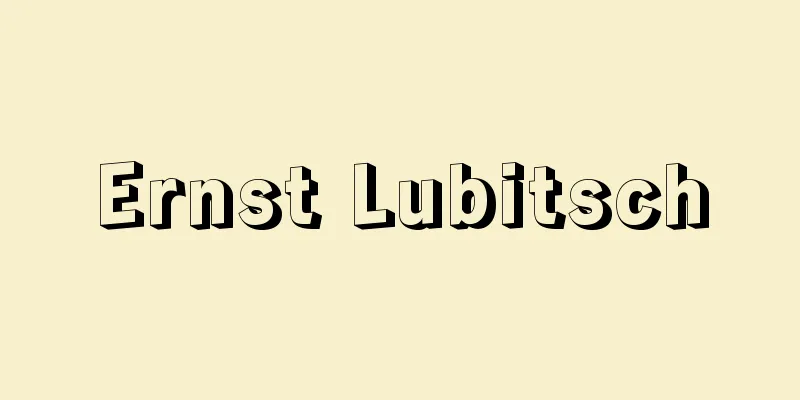
![Senmaya [town] - Senmaya](/upload/images/67cc0bea6d905.webp)
